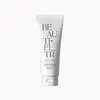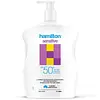What's inside
What's inside
 Key Ingredients
Key Ingredients

 Benefits
Benefits

 Concerns
Concerns

 Ingredients Side-by-side
Ingredients Side-by-side

Octocrylene 7%
UV AbsorberButyl Methoxydibenzoylmethane 2.5%
UV AbsorberBis-Ethylhexyloxyphenol Methoxyphenyl Triazine 2%
Skin ConditioningPhenylbenzimidazole Sulfonic Acid 2%
UV AbsorberWater
Skin ConditioningEthylhexylglycerin
Skin ConditioningPhenoxyethanol
PreservativeIodopropynyl Butylcarbamate
PreservativeGlycerin
HumectantDisodium EDTA
Sodium Hydroxide
BufferingC12-15 Alkyl Benzoate
AntimicrobialPotassium Cetyl Phosphate
EmulsifyingSorbitan Stearate
EmulsifyingTocopheryl Acetate
AntioxidantCetearyl Alcohol
EmollientGlyceryl Stearate
EmollientCarbomer
Emulsion StabilisingAllantoin
Skin ConditioningSodium Hyaluronate
HumectantPanthenol
Skin ConditioningBisabolol
MaskingCI 77492
Cosmetic ColorantCI 77499
Cosmetic ColorantCI 77491
Cosmetic ColorantOctocrylene 7%, Butyl Methoxydibenzoylmethane 2.5%, Bis-Ethylhexyloxyphenol Methoxyphenyl Triazine 2%, Phenylbenzimidazole Sulfonic Acid 2%, Water, Ethylhexylglycerin, Phenoxyethanol, Iodopropynyl Butylcarbamate, Glycerin, Disodium EDTA, Sodium Hydroxide, C12-15 Alkyl Benzoate, Potassium Cetyl Phosphate, Sorbitan Stearate, Tocopheryl Acetate, Cetearyl Alcohol, Glyceryl Stearate, Carbomer, Allantoin, Sodium Hyaluronate, Panthenol, Bisabolol, CI 77492, CI 77499, CI 77491
4-Methylbenzylidene Camphor 4%
UV AbsorberButyl Methoxydibenzoylmethane 4%
UV AbsorberOctocrylene 4%
UV AbsorberEthylhexyl Triazone 3%
UV AbsorberCaprylyl Glycol
EmollientCaprylhydroxamic Acid
C12-15 Alkyl Benzoate
AntimicrobialAloe Barbadensis Leaf Juice
Skin ConditioningCarbomer
Emulsion StabilisingCitric Acid
BufferingTocopheryl Acetate
AntioxidantGlycerin
HumectantHydroxyethylcellulose
Emulsion StabilisingCaprylic Acid
CleansingPEG-15 Cocamine
EmulsifyingPEG-40 Stearate
EmulsifyingWater
Skin ConditioningSilicon
AbrasiveTriethanolamine
BufferingBeeswax
Emulsion Stabilising4-Methylbenzylidene Camphor 4%, Butyl Methoxydibenzoylmethane 4%, Octocrylene 4%, Ethylhexyl Triazone 3%, Caprylyl Glycol, Caprylhydroxamic Acid, C12-15 Alkyl Benzoate, Aloe Barbadensis Leaf Juice, Carbomer, Citric Acid, Tocopheryl Acetate, Glycerin, Hydroxyethylcellulose, Caprylic Acid, PEG-15 Cocamine, PEG-40 Stearate, Water, Silicon, Triethanolamine, Beeswax
Ingredients Explained
These ingredients are found in both products.
Ingredients higher up in an ingredient list are typically present in a larger amount.
Also known as Avobenzone, this ingredient is a chemical sunscreen filter that provides protection in the UV-A range.
Avobenzone is globally approved and is the most commonly used UV-A filter in the world.
Studies have found that avobenzone becomes ineffective when exposed to UV light (it is not photostable; meaning that it breaks down in sunlight). Because of this, formulations that include avobenzone will usually contain stabilizers such as octocrylene.
However, some modern formulations (looking at you, EU!) are able to stabilize avobenzone by coating the molecules.
Avobenzone does not protect against the UV-B range, so it's important to check that the sunscreen you're using contains other UV filters that do!
The highest concentration of avobenzone permitted is 3% in the US, and 5% in the EU.
Learn more about Butyl MethoxydibenzoylmethaneC12-15 Alkyl Benzoate is made up of Benzoic Acid and long chain alcohols. It has a low molecular weight.
C12-15 Alkyl Benzoate is an emollient and texture enhancer. Due to its solubility, it is often used in sunscreens to help evenly distribute active ingredients.
As an emollient, C12-15 Alkyl Benzoate helps soften and hydrate your skin. Emollients create a film on your skin that traps moisture within.
This ingredient has been reported to cause eye irritation.
Learn more about C12-15 Alkyl BenzoateCarbomer is a polymer of acrylic acid. Its main role is to create a gel consistency.
A high amount of carbomer can cause pilling or balling up of products. Don't worry, most products contain 1% or less of carbomer.
Glycerin is already naturally found in your skin. It helps moisturize and protect your skin.
A study from 2016 found glycerin to be more effective as a humectant than AHAs and hyaluronic acid.
As a humectant, it helps the skin stay hydrated by pulling moisture to your skin. The low molecular weight of glycerin allows it to pull moisture into the deeper layers of your skin.
Hydrated skin improves your skin barrier; Your skin barrier helps protect against irritants and bacteria.
Glycerin has also been found to have antimicrobial and antiviral properties. Due to these properties, glycerin is often used in wound and burn treatments.
In cosmetics, glycerin is usually derived from plants such as soybean or palm. However, it can also be sourced from animals, such as tallow or animal fat.
This ingredient is organic, colorless, odorless, and non-toxic.
Glycerin is the name for this ingredient in American English. British English uses Glycerol/Glycerine.
Learn more about GlycerinOctocrylene protects skin from sun damage. It absorbs UV-B with peak absorption of 304 nm. It is a common sunscreen ingredient and often paired with avobenzone, a UVA filter. This is because octocrylene stabilizes other sunscreen ingredients by protecting them from degradation when exposed to sunlight. Octocrylene is a photostable ingredient and loses about 10% of SPF in 95 minutes.
Octocrylene also acts as an emollient, meaning it helps skin retain moisture and softens skin. It is oil-soluble and hydrophobic, enhancing water-resistant properties in a product.
Those who are using ketoprofen, a topical anti-inflammatory drug, may experience an allergic reaction when using octocrylene. It is best to speak with a healthcare professional about using sunscreens with octocrylene.
The EU allows a maximum of these concentrations:
Learn more about OctocryleneTocopheryl Acetate is AKA Vitamin E. It is an antioxidant and protects your skin from free radicals. Free radicals damage the skin by breaking down collagen.
One study found using Tocopheryl Acetate with Vitamin C decreased the number of sunburned cells.
Tocopheryl Acetate is commonly found in both skincare and dietary supplements.
Learn more about Tocopheryl AcetateWater. It's the most common cosmetic ingredient of all. You'll usually see it at the top of ingredient lists, meaning that it makes up the largest part of the product.
So why is it so popular? Water most often acts as a solvent - this means that it helps dissolve other ingredients into the formulation.
You'll also recognize water as that liquid we all need to stay alive. If you see this, drink a glass of water. Stay hydrated!
Learn more about Water